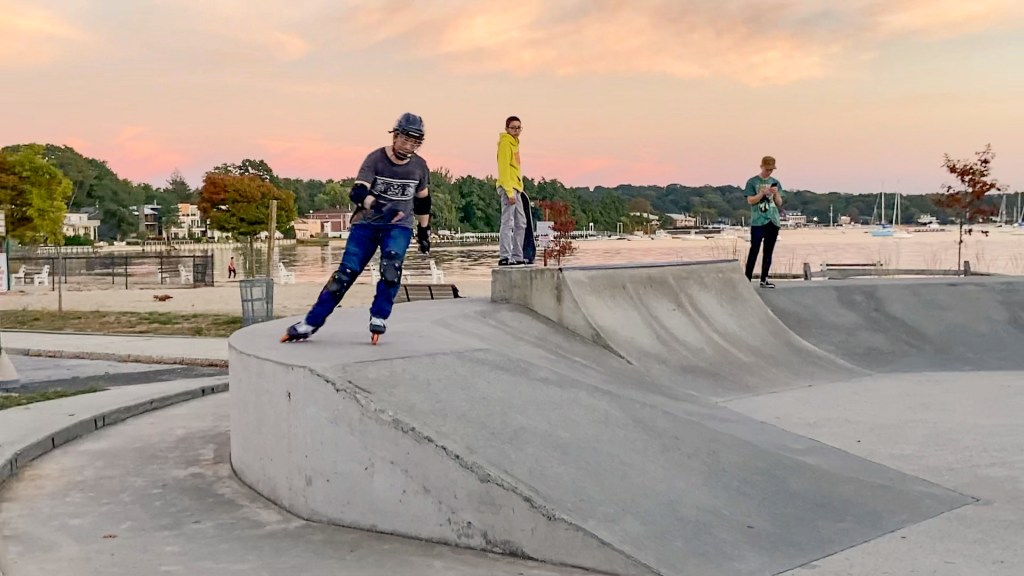Eisenhower Park is one of the few places in Nassau County where an inline skater can practice at an outdoor rink when honing one’s skills, and then stroll leisurely on wheels along scenic trails when just hanging around with friends and family. The rink is accessible all year round, and you will see people there every day. However, skating at the rink in winter months is only for the most determined folks.
If you are interested in connecting with your local skaters, consider joining r/NassauBladers at Reddit. If you are learning to skate, check out How to Inline Skate.
This article is not about a skatepark with street and transition elements, but I include it as a honorable mention as a part of my Public Skateparks on Long Island series.
This is what the rink looks like from the sky. Eight circular cement tracks surround an inner cement court with markings for baseball. Surfaces are coated, but I am not sure with what. The inner court gets less abuse and appear to have a less worn-out coating. Despite cracks, skating on tracks and on the inner court is a smooth and satisfying experience because of the coating.
Continue reading













